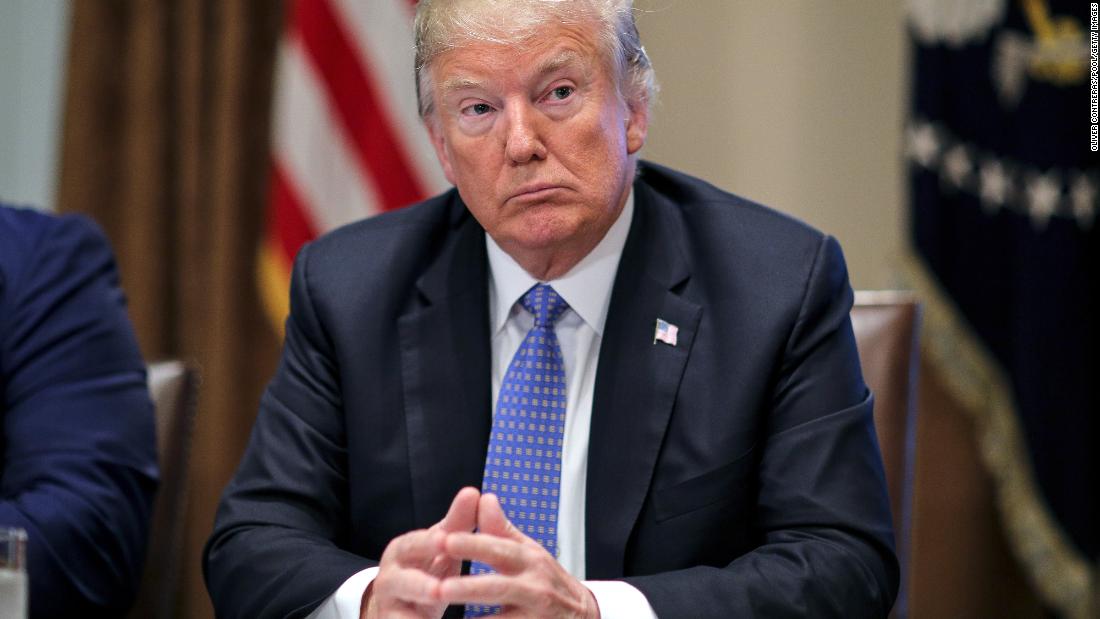
We don't know if this is the beginning of a trend or not. Three polls are just three polls, though Trump's approval rating has declined to its lowest level since April, according to the FiveThirtyEight and RealClearPolitics trackers. Still, the President's approval rating did not shift in Gallup's weekly tracker.
But if there is a trend emerging of Trump's approval rating dropping into the 30s, it's very bad news for House Republicans heading into the midterm elections.
Voters' feelings toward the President are arguably the most important factor in the elections. Polling shows that if voters like what he's doing, they're probably casting their ballots for Republican House candidates. If voters don't like what he's doing, they're probably casting their ballots for Democratic House candidates. CNN's last poll, for example, had only a 2-point difference between Trump's net approval rating among registered voters and the Democratic margin on the generic congressional ballot.
So far, the President's approval rating has stayed high enough that Republicans still have a chance at maintaining control of the House. Most polls over the last few months have had Trump's approval rating in the low 40s and a Democratic lead on the generic congressional ballot of around 7 to 8 points. This has translated into a potential Democratic pickup of 30 to 35 seats. Although that's more than the 23 net gain Democrats need to pick up the House, it's close enough to 23 that it's well within the margin of error for Republicans to hold on to the House, given the current polling.
If Trump's approval rating drops into the 30s, the bottom may fall out for House Republicans. Since 1946, a point decline in a president's approval rating is worth about 0.25 to 0.33 point in the national House vote. That is, a drop in Trump's approval rating from 42% (CNN's latest poll) to 36% (the ABC News/Washington Post poll) could increase the Democratic advantage by 2 percentage points.
That may not seem like a lot, but a look at the House map suggests it could be a very big deal. If you were to shift that national environment 2 points toward the Democrats, it might result in Democrats picking up, on average, around 45 seats or more in the House.
To put that 45-seat gain in perspective, it would be the largest for the Democrats since Watergate.
This estimate, though, may not be friendly enough to Democrats. Historically, the relationship between how voters feel about the president and how they vote for Congress isn't as strong as it is today. Given what the last CNN poll showed (just a 2-point difference between voters' net approval rating of the President and the Democratic advantage on the generic ballot), a 36% approval rating could translate into a Democratic popular-vote win of well above 10 points. The latest ABC News/Washington Post poll showed a Democratic advantage of 14 points on the generic congressional ballot, for example. This would be good enough for a Democratic gain of 50 seats or more. Democrats last gained this many seats in an election in 1948.
Indeed, we already saw how such a low Trump approval rating could affect an election earlier this cycle. His approval rating was around 36% to 37% nationally, when Democrat Doug Jones won the special Senate election in ruby red Alabama. Yes, Republican Roy Moore was a bad candidate, but the President managed just a 48% approval rating in the exit poll of that race. In other words, he was of little help to Moore in a very Republican state.
For Republicans to have a realistic (i.e. within the margin of error) shot of maintaining control of the House in 2018, Trump's approval rating must remain at least in the low 40s nationally.
For them to have a 50% chance of holding on to power in the House, Trump's approval rating will likely need to rise into the mid-40s.
Right now, Trump and his fellow Republicans are, if anything, going the other (i.e. wrong) way.
Bagikan Berita Ini















0 Response to "Trump's approval rating drop looks real, and it could be a disaster for the GOP in 2018"
Post a Comment